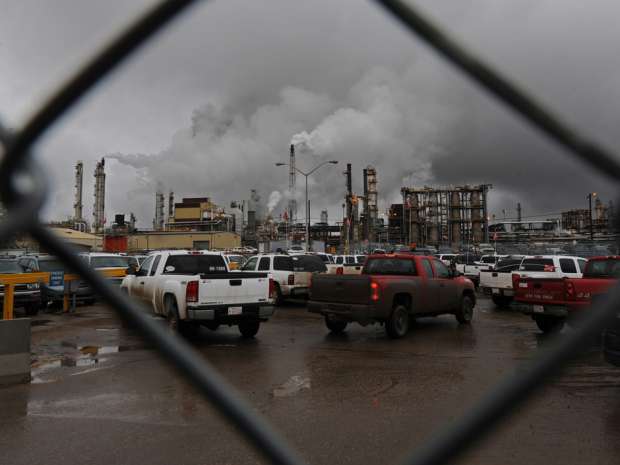As oil crashes through US$35 a barrel in New York, some producers are already living with the reality of much lower prices.
A mix of Mexican crudes is already valued at less than US$28, an 11-year low, according to data compiled by Bloomberg. Iraq is offering its heaviest variety of oil to buyers in Asia for about US$25. In western Canada, some producers are selling for less than US$22 a barrel.
“More than one-third of the global oil production is not economical at these prices,” Ehsan Ul-Haq, senior consultant at KBC Advanced Technologies Plc, said by e-mail. “Canadian oil producers could have difficulty in covering their operational costs.”
Oil has slumped to levels last seen in the global financial crisis in 2009 amid a global supply glut. While the prices of benchmarks West Texas Intermediate and Brent hover in the US$30s, they represent a category of crude — light and low in sulfur — that is more highly valued because it’s easier to refine. Some producers of thicker, blacker and more sulfurous varieties have suffered heavier losses and are already living in the US$20s.
A blend of Mexican crude has plunged 73 per cent in 18 months to US$27.74 on Dec. 11, its lowest level since 2004, according to data compiled by Bloomberg. Venezuela is experiencing similar lows. Western Canada Select, which is heavy and sulfurous, has slumped 75 per cent to US$21.82, the least in seven years. Other varieties including Ecuador’s Oriente, Saudi Arabia’s Arab Heavy and Iraq’s Basrah Heavy were selling below US$30, the data show.
Crudes of this type trade at a discount to lighter varieties because to process them “refiners have to invest in upgrading facilities such as coking plants, which are very expensive,” KBC’s Ul-Haq said.
“Most places in the world, a lot of the producers they don’t really get the Brent price, and they don’t get the WTI price,” Torbjoern Kjus, an analyst at DNB ASA in Oslo, said by phone. “It’s really a dramatic situation that really cannot continue for a very long time for many producers.”
Mexico’s government insulated itself from the oil slump after it managed to hedge 212 million barrels of planned exports for 2016, using options contracts to secure an average price of US$49 a barrel. The nation’s 2015 oil hedge provided it with a bonus of US$6.3 billion.
Not all oil producing nations are as well protected. OPEC member Venezuela’s national budget for next year assumes a price of US$40 when its own crude is trading just above US$30. The nation’s dollar reserves have fallen by 32 per cent this year to US$14.6 billion
Ironically, those selling at the lowest prices have even more incentive to pump, potentially deepening the glut that’s weighing on prices.
“A lot of the producers might want to sell as much at current prices,” rather than a level that could be even lower in coming weeks, Abhishek Deshpande, an analyst at Natixis SA, said by e-mail.


























Laissez un commentaire Votre adresse courriel ne sera pas publiée.
Veuillez vous connecter afin de laisser un commentaire.
Aucun commentaire trouvé